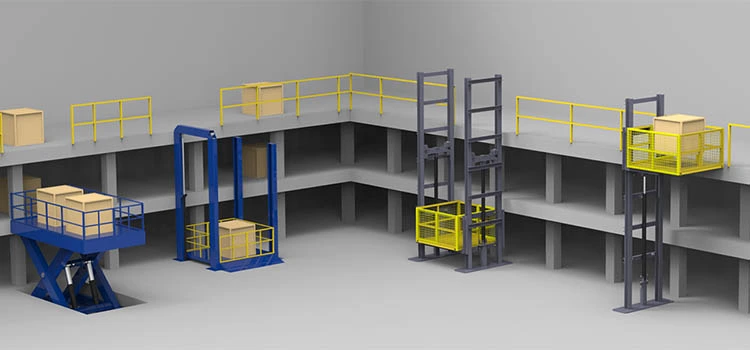We Maintain Lifts with Precision: Ensuring Security and Performance
Wiki Article
Looking Into the World of Lifts: Typical Concerns Encountered by Various Lift Mechanisms
As we browse through the vertical transport systems of modern-day structures, lifts stand apart as a crucial element of our day-to-days live. Nevertheless, behind their seamless procedure lies a world of elaborate devices that can in some cases run into difficulties. From hydraulic elevators to traction systems and machine-room-less layouts, each lift type features its set of typical concerns. Comprehending these obstacles is essential for making certain the smooth functioning of these crucial systems. Allow's explore the intricacies that underlie the procedure of elevators and the prospective concerns that can arise, dropping light on the complex internet of lift mechanisms.Hydraulic Lifts
Hydraulic lifts, often chosen for low-rise buildings, make use of fluid pressure to control the movement of the elevator auto (lift repair companies). This mechanism involves a hydraulic pump pushing oil into a cylinder, triggering the lift to relocate in the preferred instructions. While hydraulic elevators are understood for their smooth and peaceful procedure, they do feature their very own set of typical problemsOne prevalent issue with hydraulic elevators is oil leak. The seals in the hydraulic system can wear with time, resulting in oil seepage. If left unaddressed, this not only develops a mess but can additionally affect the elevator's efficiency. Additionally, concerns with the control system, such as faulty valves or a malfunctioning pump, can cause disruptions in the lift's motion.
Regular upkeep and punctual repairs are essential to make certain the smooth functioning of hydraulic elevators. By addressing these usual problems proactively, structure proprietors can decrease downtime and make sure the safety and security and efficiency of their vertical transport system.
Grip Elevators
When thinking about upright transport systems in buildings, another usual type apart from hydraulic lifts is the traction lift. Traction elevators run utilizing a system of ropes and counterweights that relocate the elevator auto by grasping onto the hoist ropes. This mechanism permits for smoother and faster upright transportation contrasted to hydraulic systems.One of the usual issues encountered by traction elevators is rope wear. The continuous activity of the ropes within the traction system can cause damage gradually, possibly causing the elevator to malfunction or become dangerous for use. Regular inspections and maintenance of the ropes are vital to ensure the elevator's correct functioning and safety and security.
One more issue that grip lifts might experience is associated with the control system. Issues with the control system can bring about concerns such as erratic movement, delays in feedback times, and even full closures. Normal testing and maintenance of the control system are crucial to avoid such concerns and ensure the elevator's dependability.
Machine-Room-Less (MRL) Lifts

Among the key components of MRL elevators is the compact gearless traction device that is installed within the hoistway. This equipment successfully drives the elevator vehicle without the need for bulky devices found in typical traction lifts. Additionally, MRL lifts commonly utilize a weight system to balance the car, additional enhancing their power efficiency.
this link
Regardless of their advantages, MRL lifts may deal with obstacles connected to upkeep and repair because of the confined space for equipment installation. Ease of access for servicing elements within the shaft can be restricted, requiring specialized training for specialists. Appropriate upkeep timetables and regular inspections are critical to ensure the continued smooth operation of MRL elevators.
Overloading and Weight Limit Issues
Are elevators furnished to take care of excess weight lots successfully and securely? Straining and weight restriction concerns are critical concerns in elevator operations. Lift producers style lifts with particular weight capacities to make certain passenger safety and tools longevity. Surpassing these weight limitations can result in various problems, including mechanical failings, delays, and security risks.When elevators are overloaded, it places extreme strain on the electric motor, cords, and other parts, potentially causing break downs or breakdowns. Security mechanisms such as sensors and overload sensing units are in place to stop elevators from relocating if they find excess weight. Furthermore, going beyond weight limitations can lead to boosted energy usage and wear and tear on the lift system.
To alleviate straining problems, constructing supervisors ought to plainly show weight limitations in elevators pop over to this site and educate occupants on the importance of sticking to these limitations - lift repair companies. Normal upkeep checks by certified specialists can also assist ensure that elevators are running within risk-free weight parameters. By resolving overloading and weight restriction issues proactively, structure proprietors can boost lift safety and performance
Electric System Failures
Going beyond weight restrictions in lifts can not just lead to mechanical concerns however you could check here likewise potentially contribute to electric system failings within the lift facilities. Electrical system failures are a critical concern in lift procedure, as they can trigger unforeseen shutdowns, breakdowns, or even security hazards.Normal upkeep and evaluations are crucial to identify and resolve possible electric issues without delay, making certain the safe and efficient procedure of lift systems. By sticking to weight limitations and performing regular electrical system checks, building owners can mitigate the risk of electric failures in lifts.
Final Thought

Hydraulic lifts, frequently favored for low-rise buildings, make use of fluid pressure to regulate the motion of the elevator automobile.When thinking about vertical transport systems in buildings, another common type apart from hydraulic lifts is the traction lift. Traction lifts operate using a system of ropes and counterweights that move the lift automobile by gripping onto the hoist ropes. Unlike standard lifts that require a separate machine room to house the devices, MRL lifts integrate most of the elements within the shaft, getting rid of the demand for a devoted maker area.In conclusion, elevators encounter usual issues such as hydraulic malfunctions, grip system failings, and electric system problems.
Report this wiki page